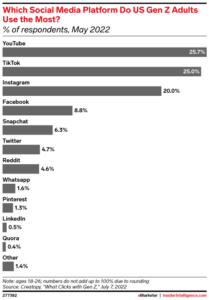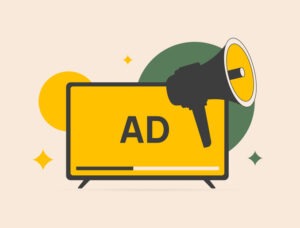Our latest midterm election saw the second-highest youth voter turnout in almost three decades, just behind the 2018 cycle – indicating young people are increasingly more interested in the political process. According to the Walton Family Foundation’s post-election report, 1 in 3 Gen Z voters wished they were more informed prior to voting. Today, we’re breaking down why campaigns can and should capitalize on Gen Z’s collective desire to be more politically informed.
Gen Z is digitally native – the first generation to experience the internet from birth – and on average, nine out of 10 Gen Zers spend over one hour online every day, and more than half spend over three hours online. How can political candidates and causes reach these crucial voters? Snapchat, Instagram, and YouTube are great tools in the toolbox, and spending just a small portion of a campaign budget on these platforms could reach younger voters, considering Gen Z relies on social media for their news.
The Impact of Reaching Gen Z Where They’re At
Educating, persuading, and mobilizing Gen Z voters to come to the polls for you could push your campaign over the finish line – especially for local races. Take California’s Newhall School District elections in 2022: Newhall’s district 1 had 4,043 voters turn out, and the winner won by just 13 votes. Newhall’s district 2 had 5,238 voters turn out, and the winning candidate won with a margin of 376 votes. Just a handful of ballots could have influenced the outcome of the elections in the other direction. With the knowledge and ability of targeting youth voters, a campaign could influence the outcome greatly in their favor.
Gen Z spends their free time across traditional social media channels. One-fourth of Gen Z adults reported spending more time on YouTube compared to all other social media channels, followed by Tiktok, and Instagram.

Political Advertising Offered by Platform
Of the top platforms highlighted in the chart above, many allow political advertising and engagement. Although TikTok prohibits political advertising, several other top socials are readily accessible to political campaigns, and are great tools to turn out these young voters.
YouTube, Instagram, Facebook, and Snap allow for digital advertising with straightforward verification processes that can take anywhere from 3 days to 2 weeks. Twitter – now known as X – can be more complicated given the recent change of ownership. X currently allows for some political advertising but approval can take anywhere from 2 weeks to several months. We’d recommend starting verification applications early to limit any roadblocks in the planning stages.
Looking to Incorporate These Strategies Into Your Campaign?
To learn more about targeting voters and increasing your campaign’s reach, click here to schedule a call with our team.





